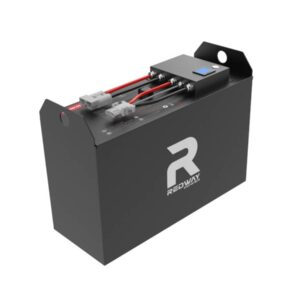Why does my forklift battery keep dying?
Frequent forklift battery depletion typically stems from improper charging practices, electrode corrosion, low electrolyte levels, or excessive load demands. Lead-acid batteries require precise voltage regulation during charging (e.g., 2.4–2.45V/cell) and regular maintenance to prevent sulfation. Pro Tip: Implement weekly voltage checks—healthy 48V batteries should maintain 50.9V (full charge) to 48.0V (50% depth of discharge).
How to Maximize Forklift Battery Lifespan
What charging errors cause premature discharge?
Incorrect charger settings and partial charging cycles accelerate capacity loss. Using 72V chargers on 48V systems creates overvoltage risks, while undersized units prolong charge times.

Deep cycle batteries require complete 8-hour charges at 10–30% of C-rating (e.g., 200Ah battery needs 20–60A). Interrupted charging leaves lead plates partially sulfated, reducing capacity by 5–15% per cycle. For example, a 700Ah battery charged at 50A takes 14 hours to reach full capacity—stopping at 12 hours leaves 20% sulfation buildup. Pro Tip: Install automatic watering systems to maintain electrolyte levels during charging, preventing plate exposure.
How does electrode corrosion impact performance?
Oxidized terminals increase resistance, causing voltage drops under load. A 0.5Ω corrosion layer on 48V systems can reduce effective voltage to 42V during 100A draws.
Monthly cleaning with baking soda solution (1 cup water : 3 tbsp soda) removes lead sulfate deposits. Torque connections to 8–12 N·m using calibrated wrench—loose terminals spark, accelerating corrosion. Real-world example: A warehouse reduced battery replacements 40% after implementing biweekly terminal inspections. Why ignore such cost-saving maintenance? Transitional phrase: Beyond terminal issues, internal corrosion…
| Maintenance Frequency | Resistance Increase | Voltage Drop at 150A |
|---|---|---|
| Monthly | 0.02Ω | 3V |
| Quarterly | 0.15Ω | 22.5V |
Why does electrolyte level matter?
Low electrolyte exposes plates, causing irreversible sulfation. Maintain levels 6–8mm above plates using distilled water—tap water minerals create conductive bridges.
Check levels weekly in summer (higher evaporation) vs monthly in winter. A 10% electrolyte loss in 600Ah batteries reduces capacity by 35–40%. Transitional phrase: Practically speaking, dehydration isn’t just…
What load management prevents over-discharge?
Peak current draws exceeding 5C rate damage cells. For 400Ah batteries, limit loads to 2,000A (5×400A).
Implement load rotation—spread heavy lifts across multiple batteries. Warehouse case study: Alternating three batteries per truck extended cycle life from 1,200 to 1,800 charges. How many cycles are you losing?
| Discharge Depth | Cycle Life | Capacity Retention |
|---|---|---|
| 50% | 1,200 | 80% |
| 80% | 400 | 65% |
When should batteries be replaced?
Capacity below 60% and charge time doubling indicate replacement needs. Test with 20-hour discharge rate: 500Ah battery should deliver 25A for 20hrs to 10.5V/cell.
Transitional phrase: Beyond performance metrics… Pro Tip: Retire batteries showing >20mV variance between cells—imbalance accelerates degradation.
Should You Upgrade to a Lithium Forklift Battery?
Battery Expert Insight
FAQs
Can I revive a completely dead forklift battery?
Only through professional reconditioning—multiple deep discharges cause permanent plate damage. For batteries below 8V, replacement is more cost-effective than restoration.
How often should electrolyte be checked?
Weekly in temperatures above 25°C, biweekly below. Maintain levels within 3mm of manufacturer’s fill line using distilled water only.
Why does my battery overheat during charging?
Typically indicates incorrect charge voltage (over 2.4V/cell for lead-acid) or blocked cell vents. Immediately stop charging if temperatures exceed 45°C.
